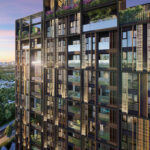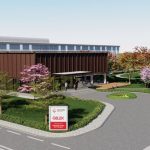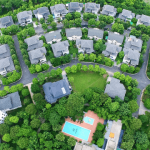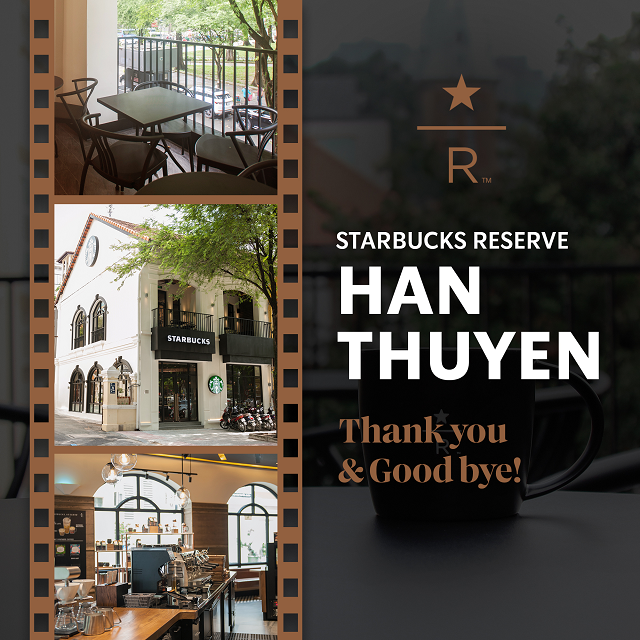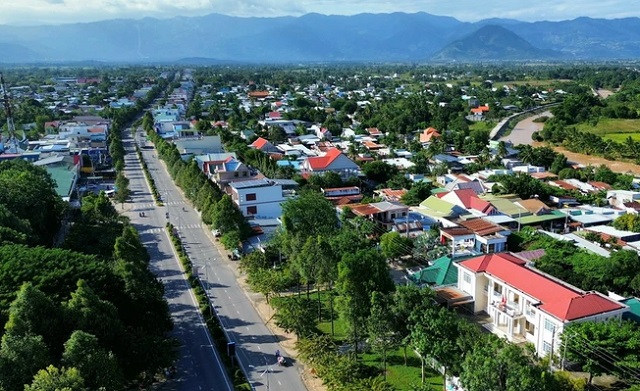
|
Illustration. (Source: VNA)
|
Experts opined that green real estate projects that meet certain standards are likely to retain their value better in the secondary market. Specifically, residential projects with green certifications have shown stable price increases and better price retention during market fluctuations.
According to the World Green Building Council (WorldGBC), green buildings can increase overall asset values by up to 7% over five years. Additionally, investing in green buildings offers significant economic benefits, with quick capital payback and low operating costs. Data from popular green building certification systems indicates that the additional cost for a green project is usually reasonable and can be recouped within a short period.
The International Finance Corporation (IFC), developer of the EDGE green building certification system, notes that the extra investment for an EDGE-certified building is approximately 2-3%, with an average payback period of three years, resulting in a minimum energy and water savings of 20%. Similarly, the LEED certification, administered by the U.S. Green Building Council (USGBC), recognizes additional costs ranging from 1.5 to 8%, with a payback period of 1.5 to 6 years, and potential energy savings of up to 30-40%.
Vietnam is striving to achieve its net-zero emission commitment by 2025. With the real estate sector contributing about 39% of total greenhouse gas emissions (including construction and operation of buildings, according to the UN Environment Program), positive shifts are being made to align with the country’s goals.
The market for green real estate, featuring carbon-neutral buildings with LEED, EDGE, and other certifications, is emerging as an inevitable trend, meeting sustainability demands while offering practical economic benefits to investors, as analyzed by experts.
Vietnam has witnessed a breakthrough growth in the number of green buildings in recent years. According to a 2024 overview report on Vietnam’s green building market by the EDGE certification system and the International Finance Corporation, a member of the World Bank, Vietnam currently boasts 559 projects with 13.6 million square meters of green-certified floor space, including 31,384 apartments and 3,234 individual green homes.
Notably, in 2024, Vietnam had 163 green-certified projects, more than double the number in 2023 and triple that of 2022 (with 54 projects), and a remarkable 27-fold increase compared to 2014 (with only 6 projects).

|
Illustration. (Source: VNA)
|
Developing green buildings not only addresses environmental concerns but also serves as a sustainable competitive strategy for investors as the demand for green real estate among buyers and investors rises. According to Trang Bui, CEO of Cushman & Wakefield Vietnam, the benefits of green real estate extend beyond certifications and net-zero goals, offering long-term positive impacts due to the potential longevity of real estate, which can span hundreds of years.
With 80% of the world’s existing building stock expected to still be in use by 2050, there will be a growing demand for improving the green credentials of operating buildings in the coming years. As pollution levels rise in major cities, younger generations are increasingly prioritizing green living spaces and environmental standards when choosing their homes. They seek environments with clean air and natural light.
A 2024 customer psychology survey by Batdongsan.com.vn revealed that 86% of respondents were interested in purchasing a green home, and 88% were willing to pay a premium for it. This preference is not limited to domestic consumers but extends to international investors, especially those from Europe and Singapore, who prioritize ESG (Environmental, Social, and Governance) criteria in their investment decisions, presenting significant opportunities for real estate investors in Vietnam.
Experts predict that pioneering the development of green and carbon-neutral projects will not only cater to market trends but also attract international capital. Compared to conventional real estate ventures, green projects offer investors policy advantages, as the government has taken synchronized actions to promote the development of green buildings.
Specifically, the National Master Plan for the 2021-2030 period, with a vision toward 2050, has identified the development of “green, smart, and low-emission urban areas” as one of its key orientations. Deputy Minister of Construction Pham Minh Ha shared that, in recent years, the Vietnamese government has issued various policies related to energy efficiency, resource conservation, environmental protection, greenhouse gas emission reduction, and adaptation to climate change, aligning with the country’s digital transformation and green growth strategies.
The Ministry of Construction is also gradually improving the legal framework for green buildings through new technical standards and updated construction regulations that emphasize energy efficiency, the use of sustainable materials, and climate change adaptation. Some localities, such as Ho Chi Minh City, Danang, and Hanoi, have incorporated green building criteria into their planning approval and construction permit conditions for social housing projects, new urban areas, and commercial centers.
Moreover, developers of green projects can access preferential capital through climate finance programs, green bonds, or technical support packages from international organizations like the IFC (World Bank), GIZ (Germany), and AFD (France). This not only reduces initial investment costs but also facilitates strategic investor engagement, particularly ESG funds.
However, the Vietnam Real Estate Brokers Association (VARS) points out several challenges in developing green real estate, including high initial investment costs, a lack of experts, consultants, and capable contractors, limited awareness, and unclear preferential policies without a long-term sustainable strategy.
To overcome these challenges, VARS recommends that real estate developers actively adopt international green standards such as EDGE, LEED, and LOTUS (the first green building rating system developed specifically for the Vietnamese market). By doing so, they can integrate energy efficiency measures, sustainable materials, and technology solutions from the design and planning stages.
Additionally, developers are encouraged to collaborate with international organizations like the IFC, GIZ, and UNDP to access preferential capital and technical advice for developing green buildings. It is also crucial to devise clear communication strategies that highlight the value of “greenness” to attract the next generation of customers and ESG investors.
VARS further suggests that government agencies should expedite the completion of standards, regulations, and legal frameworks related to green buildings, low-carbon urban development, and carbon neutrality. Concrete preferential policies for green-certified projects, such as priority in planning approval, reduced land use taxes, credit incentives, or encouragement through bidding criteria for land use, are also recommended.
Furthermore, providing training and capacity-building support for consultants, contractors, planning management staff, and construction inspectors will ensure effective and synchronized implementation.
Thu Hang
– 15:23 05/02/2025
Green Project Bonds: Unlocking Capital for Sustainable Real Estate
Green bonds are an increasingly popular strategic financial tool that is propelling the growth of green real estate. With a robust legal framework and favorable policies in place, businesses can easily raise long-term capital while enhancing the value of their projects through energy savings and reduced carbon emissions. This powerful incentive is driving the Vietnamese real estate industry towards a more sustainable future.
The Capital’s Charm: Unveiling The Senique Hanoi
The Senique Hanoi is an exquisite, high-end residential project, boasting 2,150 units in the eastern part of Vietnam’s vibrant capital. Unveiled by CapitaLand Development, this prestigious address is a response to the overwhelming demand for their Lumi Hanoi projects.
Many investors benefit from borrowing green real estate project labels to promote and increase their attraction capacity.
According to VARS, there is still a lack of accurate understanding among the public about green construction. This also provides an opportunity for many opportunistic investors to exploit and use the label of green real estate projects for promotion purposes, aiming to increase attraction, capital turnover, and expand their customer base.
Ocean City – The Top Destination for the Global Citizen Living Green
Ocean City, the Eastern Capital of Vinhomes, has been recognized by leading Singapore newspaper, Straits Times, as the preferred choice for the new generation of global citizens seeking to embrace the green trend in the real estate market. With its unique lifestyle values, Ocean City is consistently hailed as the “most livable space on the planet.”



